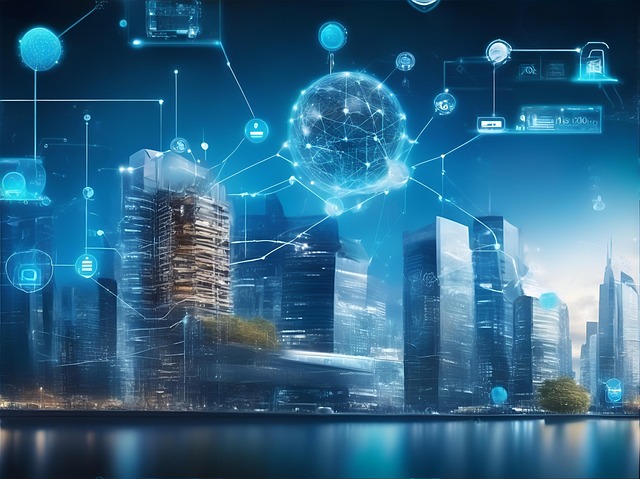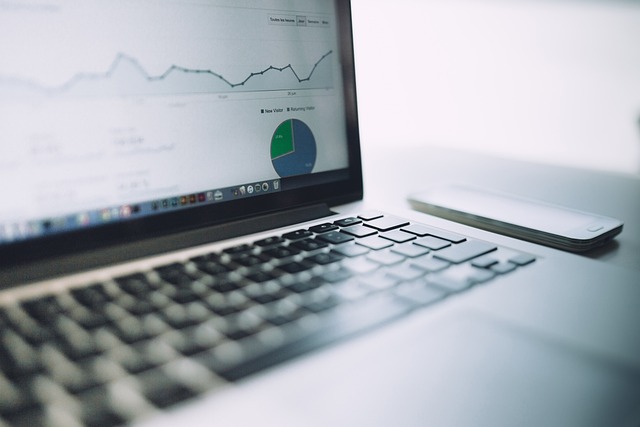AI kitchen automation for chefs is transforming food service by integrating computer vision and artificial intelligence to automate tasks like ingredient analysis, portion measurement, and spoilage detection, enhancing accuracy, freeing up chefs' time, and fostering culinary innovation. This technology streamlines repetitive jobs, reduces errors, and allows chefs to focus on creativity, ultimately elevating the dining experience with customized, visually appealing dishes tailored to individual tastes and dietary needs. Future prospects include AI analyzing customer data for personalized menus and robotic arms assisting with complex food prep.
“Discover the transformative power of AI Computer Vision in business operations, especially within the culinary realm. This article explores how advanced algorithms enhance efficiency and innovation. From kitchen automation that streamlines chef workstations to predictive analytics for precise ingredient management, AI is revolutionizing food preparation. We delve into the benefits, including cost reduction, quality improvement, and enhanced customer experiences. Additionally, we peek into the future prospects of AI in culinary applications, shaping a smarter, more sustainable kitchen.”
- Understanding AI Computer Vision in Business
- Kitchen Automation: How AI is Revolutionizing Chef Workstations
- Benefits and Future Prospects of AI in Culinary Applications
Understanding AI Computer Vision in Business

AI Computer Vision is transforming businesses by enabling machines to interpret and understand visual data, much like humans do. This technology goes beyond simple image recognition; it facilitates complex tasks such as object detection, image segmentation, and scene understanding. In the culinary arts, AI kitchen automation for chefs leverages computer vision to streamline preparation processes, enhance accuracy, and optimize ingredient usage. For instance, AI systems can analyze vegetable cuts, ensure precise portioning, and even detect spoilage in produce, revolutionizing how kitchens operate.
This innovative application of AI isn’t limited to gourmet restaurants; it benefits various food service establishments, from catering companies to fast-food chains. By integrating computer vision, businesses can improve efficiency, reduce waste, and enhance overall food quality. Moreover, AI automation liberates chefs from mundane tasks, allowing them to focus on creativity and innovation, thereby elevating the dining experience for patrons.
Kitchen Automation: How AI is Revolutionizing Chef Workstations

AI kitchen automation is transforming chef workstations into dynamic, efficient hubs. By leveraging computer vision, artificial intelligence can analyze ingredients, measure portions, and detect cooking progress with remarkable accuracy. This technology streamlines tasks like chopping vegetables, mixing dough, or monitoring protein sear times, freeing up chefs to focus on creativity and presentation.
Imagine a kitchen where AI-driven robots handle repetitive tasks, ensuring precise measurements and consistent quality. This not only reduces human error but also allows chefs to experiment with new recipes and flavor combinations. With AI kitchen automation, the workstation becomes a collaborative space, enhancing productivity and fostering culinary innovation in ways never before possible.
Benefits and Future Prospects of AI in Culinary Applications

The integration of AI in culinary applications has opened up a world of possibilities, revolutionizing how kitchens operate and enhancing the dining experience. One of the most significant benefits is AI kitchen automation for chefs. Automated systems can handle repetitive tasks, such as ingredient measurement and preparation, freeing up chefs’ time to focus on creativity and precision cooking. This not only improves efficiency but also reduces human error, ensuring consistent dish quality.
Looking ahead, the future prospects are even more promising. AI algorithms can analyze vast datasets of customer preferences, dietary restrictions, and flavor combinations to create personalized menus. Moreover, AI-driven robotic arms can assist in complex food preparation tasks, allowing chefs to experiment with innovative techniques. As AI kitchen automation for chefs advances, we can expect to see restaurants offering highly customized, visually appealing dishes that cater to individual tastes and dietary needs, setting new standards in the culinary world.
AI computer vision applications, particularly in kitchen automation, are transforming the culinary landscape. By leveraging advanced technologies, AI is revolutionizing chef workstations, streamlining workflows, and enhancing efficiency. The benefits are clear: improved accuracy, reduced time, and increased consistency in food preparation. Looking ahead, the future of AI in culinary applications promises even more innovative solutions, benefiting both professional chefs and home cooks alike. As AI kitchen automation for chefs gains traction, we can expect a new era of culinary creativity and precision.
